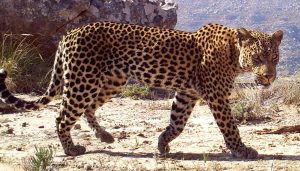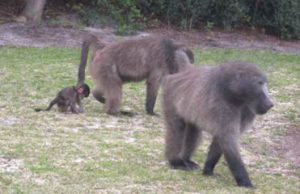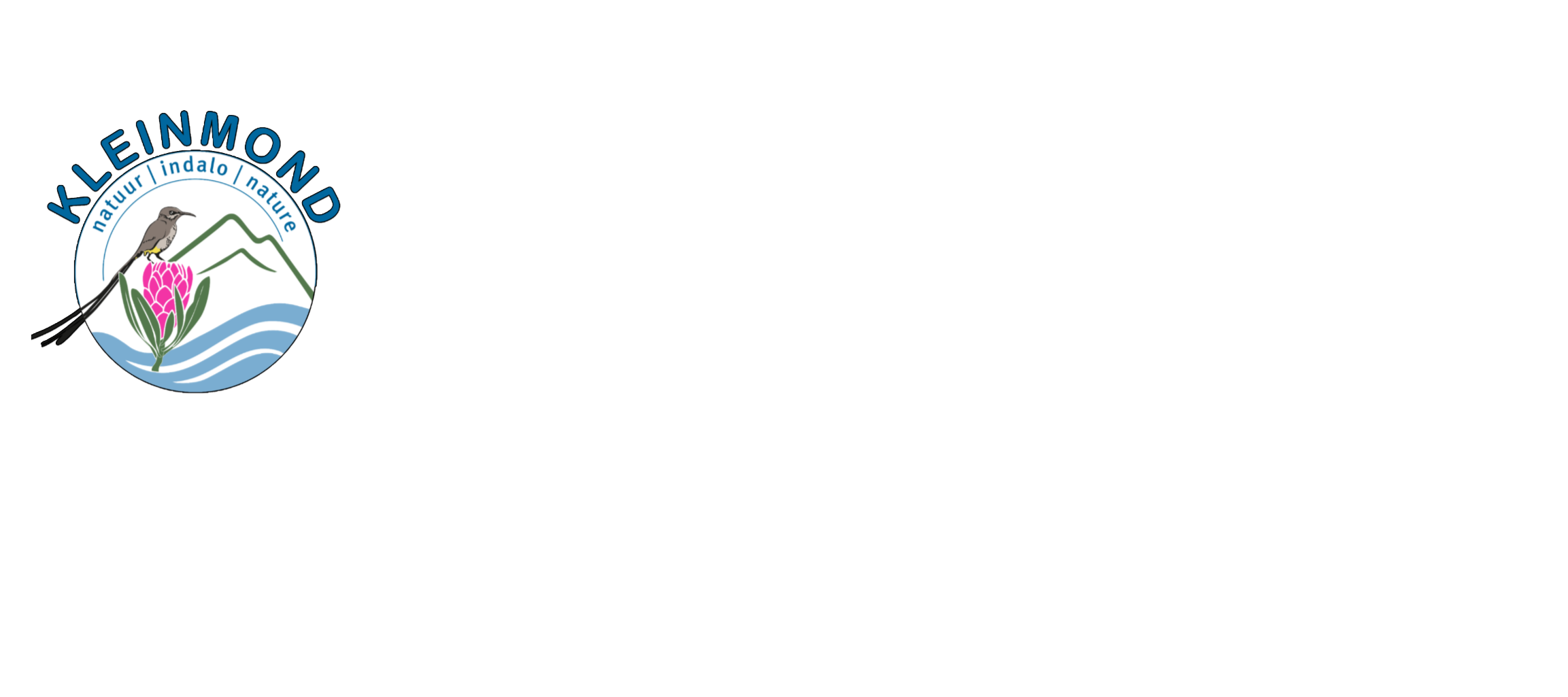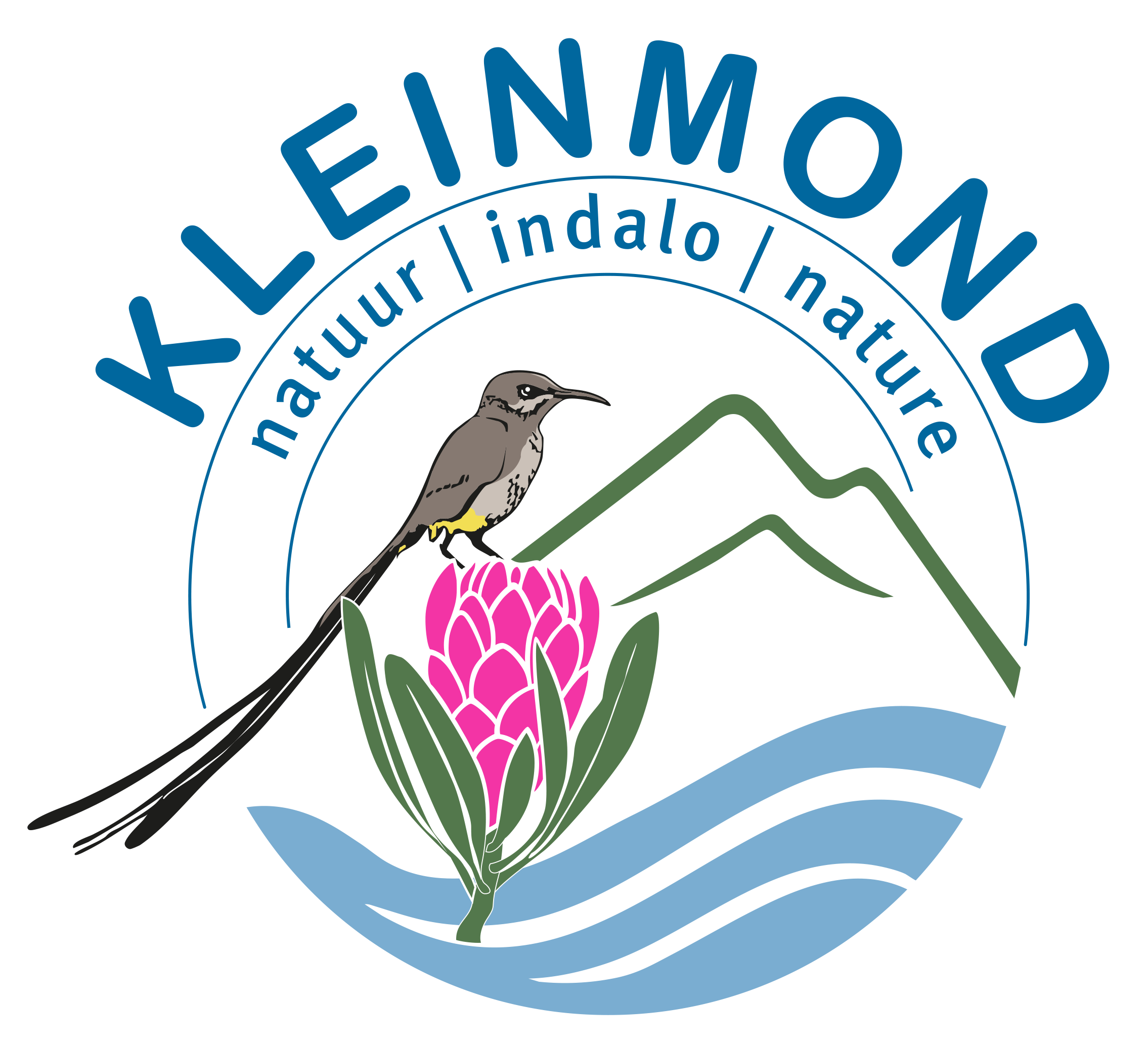Fauna
Fauna
Several wild animal species visit the town area from time to time, others are regularly seen in the wild and some are here but stay out of people’s way.
A long time ago the Big Five roamed the countryside, but today only the mysterious leopard remains.
Unfortunately, illegal hunters using snares and dogs are already active in our region. However, if you are lucky, you may see some of the following wild animals:
Cape leopard (Panthera pardus, luiperd)
Smaller than leopards further north in the country. Mostly nocturn
al, solitary, and secretive. Prefers mountainous areas. They have been observed hunting penguins in Betty’s Bay as well as at the Kleinmond Golf Course during the COVID lockdown.
Caracal (Caracal caracal, rooikat)
Weighs about 14 kg, shoulder height 40-45 cm. Large, upright ears with black tufts. Prefers open fields in mountainous areas. Seen on the edge of town during the COVID lockdown. Nocturnal and solitary. Primarily catches small mammals and birds but can attack prey larger than itself.
Cape fox (Vulpes chama, silwer vos)
The only true fox in South Africa. Rarely seen on farms in the surrounding area. Prefers low-lying open fields. Nocturnal and solitary. A carcass was found a few years ago on a bicycle path near Arabella.
African clawless otter (Aonyx capensis, groototter)
A sturdy animal with dense fur. Found in the sea and rivers. Its front paws have no claws. Often seen early in the morning and late in the evening at the lagoon and along the coast. Eats small marine creatures like fish and crabs, as well as frogs, insects, and reptiles. Their presence indicates clean water.
Cape grey mongoose (Galerella pulverulenta, kleingrysmuishond)
Dark grey. Diurnal and solitary. Omnivorous. Lives in burrows, under rocks, and in dense bush. Often seen along coastal paths.
Cape porcupine (Hystrix africaeaustralis, ystervark)
A large rodent. The upper part of its body is covered in sharp, hard black and white quills. Its tail has loose quills that can be made to rattle. Nocturnal, solitary, or in pairs. Eats bulbs, fruit and bark.
Marsh mongoose (Atilax paludinosus, watermuishond)
A sturdy animal, almost black to rust brown. Sometimes spotted. Always found near rivers, vleis, marshes, and river mouths. Solitary, active early in the morning and in the evening until dusk. Good swimmer.
Rock hyrax (Procavia capensis, dassie)
Found in koppies, cliffs, and rocks with sufficient grazing. In Kleinmond especially along the coastal paths.
Lives in colonies, diurnal. Grazes mostly early in the morning and evening.
Red rock rabbit (Pronolagus rupestris, rooiklipkonyn)
Coarse fur, salt-and-pepper reddish-brown, dull yellow underside. Found in rocky terrain, cliffs, and rocky ridges with edible grasses. Usually solitary, but always part of a group with common resting places. Nocturnal, starts grazing at sunset. Observed on Kusweg and on Jean’s Hill.
Klipspringer (Oreotragus oreotragus, klipspringer)
A small antelope with dense fur. Males have short horns. Large black tear marks at the corners of their eyes. Always between and on rocks, very agile. Moves on the tips of its slender hooves. Rests during the heat of the day, grazing early morning and late afternoon. Eats leaves, sometimes grass. Not dependent on water.
Usually seen in pairs or family groups. Rams are territorial.
Sometimes seen in Kleinmond, standing silently on rocks opposite the Klipspringer trail.
Cape Grysbok (Raphicerus melanotis, Kaapse grysbok)
A small antelope, dark reddish-brown with long pointed ears. Males have short, straight horns. Found in densely wooded areas near rivers and at the foot of mountains. Not dependent on water.
Solitary except during mating season. Mostly nocturnal, starting to graze late in the afternoon.
Chacma baboon (Papio hamadryas ursinus, Kaapse bobbejaan)
 Troops of up to 70 animals with a clear hierarchy. Sleeps on high cliffs or large, dense trees at night. Grazes during the day. Very adaptable regarding food and habitat.
Troops of up to 70 animals with a clear hierarchy. Sleeps on high cliffs or large, dense trees at night. Grazes during the day. Very adaptable regarding food and habitat.
Distinctive features: sickle-shaped tail, pink sitting pads, elongated snout, eyes close together. Hind legs longer than front legs. Males larger than females.
Has become accustomed to human food and easily becomes a problem in town areas.
Local troop usually visits Kleinmond once or twice a year
Snaring
Snaring, the most commonly used method of obtaining meat for eating in South Africa, is becoming a growing issue in the Western Cape and also in the Kleinmond district.
A snare is typically a piece of wire, cable, rope or nylon tied into a noose. The noose is anchored and positioned in a way to catch animals by the foot, head or body. They take a huge toll on the entire ecosystem.
It is an illegal as well as cruel hunting method.
In response to this problem the Western Cape Snare Response Plan, a collaborative network of conservation, animal welfare and volunteer organisations, was launched in 2023. Its aim is to make sure that snaring incidents are effectively reported and acted upon.
It is very difficult to catch a snare poacher in the act. Suspects usually claim that they found either the snare or the animal “accidentally”. Therefore, the Cape of Good Hope SPCA has developed a portable DNA-sampling toolkit for use by its inspectors and other agents in the field when attending to snare sites, whereby any snare can be tested in situ for the presence of human DNA. This could conclusively link a suspect to a snare and ensure a successful prosecution.
Poachers’ reaction to increased law enforcement is to move to new areas and residents in our area should be aware of the problem and know how to react should snares or snared animals be found in the fynbos.
Become part of the solution
If you find an animal caught in a snare, and empty snare of a dead animal in a snare, you can report the matter in the following way:
A live wild animal caught in a snare
Call 076 127 8485, the Snare Free hotline and give the following information:
- Location (GPS coordinates/pin preferable)
- Animal species/description (if known)
- Your contact number.
Empty snares or a dead animal caught in a snare
- Take a photo and report it to the Cape Leopard Trust’s online Data Portal.
- You will need to provide the location and a photograph.
- Then remove and dispose of the snare/s responsibly to ensure that they cannot be used again.
Sources
Engell, K. 2023. Wildlife Cruelty, in Daily Maverick, 3 August 2023.
Kogelberg Biosphere Wildlife Rescue and Training Centre
KNCS is involved with this centre on a voluntary basis.
The centre, the first of its kind in the Western Cape, has a CapeNature permit to take in and rehabilitate animals with the aim of releasing them back into the wild.
The centre opened its doors in December 2024 and already a number of injured and vulnerable animals have received care. They are released in the wild as soon as they are on their feet again.
The centre is located between Betty’s Bay and Pringle Bay in a previously disused building that is leased from OM. It boasts an emergency clinic and patient recovery room, a kitchen for preparing food for the patients as well as flight enclosures.
According to Corlie Hugo, Kogelberg Biosphere Executive Coordinator, it took two years from the planning stages to the official opening of the centre. ““We are ecstatic that the centre is now operating,” she says. “And it’s thanks to the incredible local community, who helped over the past two years to get everything in place.”
Michelle Watson, who manages the centre, says the initiative is driven by the urgency to deal with growing numbers of injured, orphaned or displaced wildlife.
The centre is a not-for-profit company and a public benefit organisation. All funds raised therefore go to meeting their motto: Nature for Life. They can provide 18A tax exemption certificates to donors.
For more information, contact corlie@kogelbergbiosphere.org.za or go to https://kogelbergbiosphere.org.za/wildlife-rescue/

